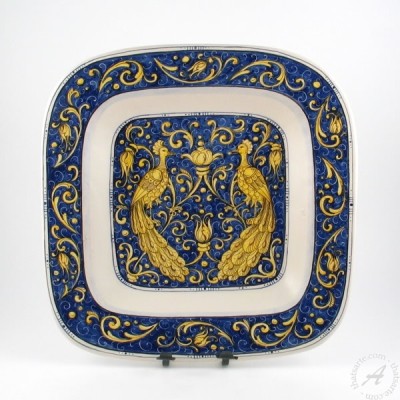A source of positive symbolic meanings, peacocks are prominent in Italian pottery.
Pliny the Elder, the Roman philosopher, described very well how the peacock replaces his entire tail of feathers annually. This fascinating event, together with the belief that the bird’s flesh never goes bad but dries naturally, entitled our ancestors to depict him as a symbol of resurrection, renewal and immortality.
Often the representation of the peacocks on Italian ceramic objects focuses on the “eyes” that decorate the birds magnificent tail. Occhio di pavone, the “peacock eye”, has been a popular motif on our pottery: for example on the rim of Renaissance wall plates, on large serving bowls, on our dinnerware.
The “eyes” are said to be added to the tail feathers of the peacock by the Greek goddess Hera after the death of his loyal servant Argus who boasted one hundred eyes. Who would not care for such a guardian! Chasing for symbolic meanings we found out that the many eyes on the tail of the peacock represent the beauty of the stars and the universe.
Distracted by symbols, we forgot to mention that the actual bird is a really a beauty and this fact alone legitimates his prominence in Italian ceramic art!
By Tiziana Manzetti

